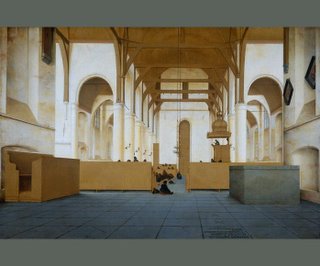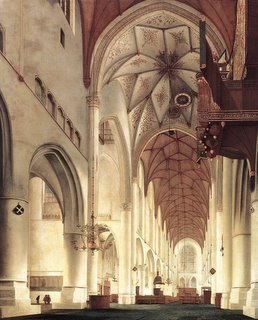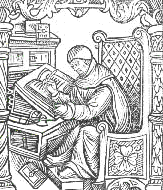Pieter Saenredam (1597-1665)
Rembrandt, Vermer, Ruisdael - all famous names associated with the Golden Age of Dutch painting in the 17th century. But are you aware of Pieter Saenredam? Probably not, unless you are an art historian. And yet his paintings, mostly of near-empty churches are so deeply moving they deserve a wider audience. What separated Saenredam from his more famous colleagues was that he painted with a theological purpose. His architecturally precise drawings and paintings (which are so accurate they can be used as historical records), document the "stripping of the altars," the removal from the church of all Roman Catholic symbolism, statuary, and ecclesiastical furnishings. What is left is the pure space of white walls, gothic arches, and the dominie (pastor) preaching from the pulpit.

To the left is the interior of the Protestant church of St. Odulphus in Assendelft (1649), which hangs in the Rijksmuseum in Amsterdam.
Click on it see a larger view of the painting. One can clearly see the preacher proclaiming the gospel from the pulpit.

Born in Assendelft, he trained and lived most of his life in Harlem. Note the meticulous beauty and immensity of space conveyed in his painting of St Bravo's church in Harlem.
The graven image has been removed in faithfulness to the Second Commandment. As the Heidelberg Catechism says in Lord's Day 35, "But may not images be tolerated in the churches, as books to the laity? No: for we must not pretend to be wiser than God, who will have his people taught, not by dumb images, but by the lively preaching of His word" (Q. 98).
Saenredam teaches us that there is beauty and grace in simplicity, and his spiritual temper is the opposite of the Baroque or Rococo. It is a spirit that has marked the Reformed churches since their inception, and which we surrender at our peril. For Saenredam and our Calvinist forebears understood that safest path to tread is to glorify God, and adorn His churches with the Word.

Interior of the Buurkerk in Utrecht, 1644.



0 Comments:
Post a Comment
<< Home